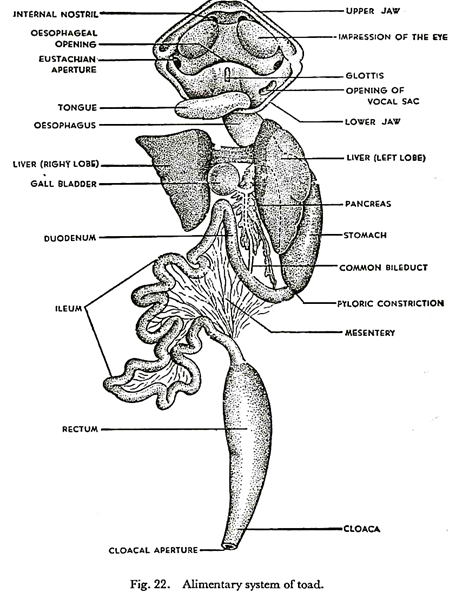In this article we will discuss about the life cycle of Ascaris suum in pigs.
Eggs in faeces:
It has been shown that the female of A. suum may lay as many as 2,00,000 eggs per day. The eggs are laid in the host’s (pig) intestine which are deposited outside along with faeces of host.
Development in soil:
A Rhabditiform larva is developed from the unsegmented ovum within the egg-shell in 10 days or longer, depending on the atmospheric temperature and humidity. Under suitable conditions of moisture, temperature and oxygen the infected eggs are known to remain viable for about 5 years or perhaps longer but hot, dry conditions such as those prevailing in sandy soil with direct sunlight, kill them in a few weeks.
During its development the larva undergoes moulting once in the egg-shell to become the second larval stage and this is the infective larval stage which infects another host.
Infection of the new host:
The larvae rarely hatch and infection usually occurs through ingestion of the eggs with food or water or from the soiled skin of the mother in the case of sucking pigs.
Later development and migration:
The ingested eggs hatch in the intestine and the juveniles hatch out. It performs active thrashing movements and bores through the intestinal epithelium to enter into the hepatic circulation which carries it to the liver. The majority reach this organ by way of the hepato-portal blood stream. They may arrive in the liver 24 hrs after the eggs have been ingested or even earlier.
From the liver they are transported to the heart via post canal vein and then to the lungs, where they are arrested in the capillaries, although some may pass through into the arterial circulation and reach other organs like the spleen and kidneys. The majority of the larvae undergo moulting to the third larval stage between the fourth and fifth day after infection.
When the larvae are present within the lungs, they rupture out of the blood capillaries and finally find their way in the lung alveoli. After about 6 days stay there, the larvae undergo moulting. The act of moulting initiates a period of marked growth and development and this is also associated with the migration of larvae to the lungs.
Now the larvae pass through the alveolar duct to the small bronchioles and then gradually ascend the bronchial tree or trachea and when the cough is swallowed, the third stage larvae arrive in the intestine seven to eight days after infection. Douvres (1967) is of opinion that moult to the fourth larval stage takes place about the 10th day, in the intestine, this being contrary to the views of Roberts (1934) who opined that this moult happened in the respiratory system and that only fourth stage larvae were able to survive the acidic environment of the stomach.
At this time they measure about 1.2-1.4 mm. Within the intestine the larvae gradually increase in size and they moult for the fourth time and measure 4.5-6.5 mm in size by 21 days after infection. The maturity of this parasite occurs after 50-55 days and eggs appear in the faeces at 60-65 days.
